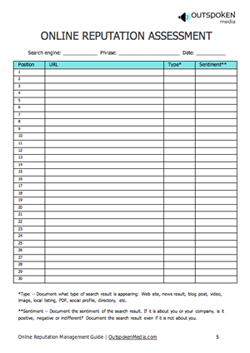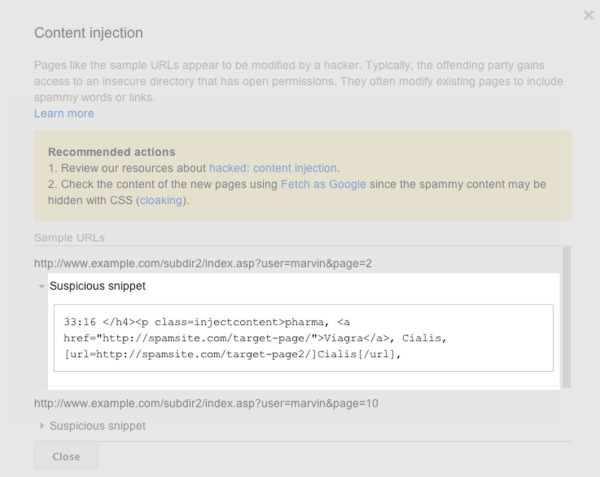With e-commerce sales on the rise, more and more companies are relying on web space to competitively sell their products and services. As consumers become more comfortable shopping online, it is becoming much more difficult for businesses to compete for online sales. Furthermore, with all the latest Panda and Penguin changes, it has become very confusing and increasingly frustrating to figure out which channels to invest in for producing the greatest ROI. In such volatility and uncertainty, how do e-commerce websites compete for consumers and grow their revenue? Here are proven strategies that will help you to increase your e-commerce sales.
1) Measure Everything
From email marketing to an Google Google Adwords campaign, it’s important to track every lead. For example, let’s say that you are sending a promotional email to your audience. In this case, it’s relatively easy to measure campaign performance by using URL shorteners such as Google’s URL shortener. It’s extremely important to take your time and properly tag each and every link. It’s not enough to know which email campaign produced the most results. You need to know how many people clicked on a link, how much revenue is generated from customers clicking on that link, how many total transactions have been generated as a result of individuals clicking on that link, and the average value and e-commerce conversion rate. Each and every piece of the marketing campaign should be very carefully and meticulously tracked. As a result of this effort, it will be possible to take the most successful pieces of the advertising campaigns and combine them together to produce a much more powerful lead generation campaign that yields more ROI. Every time you enact a marketing initiative, ask yourself: How can I measure and track it?
2) Rely on Multiple Sources of Leads
With all the algorithmic changes such as Panda and Penguin, it has become increasingly difficult to compete for organic space. Relying on a single source of leads, such as the organic section of the search engine, can put your business efforts in very dangerous territory. Algorithmic changes will continue to occur; therefore diversifying your lead generation efforts will give you balance and more certainty.
There are many ways to drive qualified traffic to your e-commerce website. Some good choices are: email marketing, Facebook Facebook Ads, Google Adwords, LinkedIn LinkedIn Ads, StumbleUpon’s Paid Discovery, Reddit’s Ads, Google Merchant, Yahoo Yahoo Ads, etc. In the effort to diversify and increase leads, it is necessary to continuously search for more ways to promote your products or services. First, test your advertising efforts on a small scale, and if it works, than continue scaling it. Every e-commerce business is different and will respond differently to each advertising effort. Try not to invest too much time reading and researching various studies. You will need to try something for yourself to see what works. Each business is unique. Other studies or results might not correlate to your own business.
I’ve tried hundreds of ways to generate leads, and after all this time, I still don’t understand why some lead generation efforts outperformed others. Furthermore, it is not beneficial for me to spend a lot of time figuring out why some people buy and some people don’t. What makes my efforts successful is trying things on a small scale and scaling up successful ones and scaling back unsuccessful ones. I would also recommend that you don’t completely give up on unsuccessful campaigns. Consumer sentiment changes over time, so repeating an unsuccessful campaign in a different time frame could bring tremendous results. The most important thing to remember is to constantly search for new ways to generate sales and always test to see what works.
3) Use the 80/20 Principle to Your Advantage
In e-commerce, the 80/20 principle is extremely useful–especially in determining the success of each individual lead generation initiative. I always like to do more of things that work and less of things that aren’t working. It only makes sense to concentrate one’s energy on successful outcomes, rather than shooting in the dark hoping to produce a positive ROI. The 80/20 principle works extremely well when applied to e-commerce KPIs such as: Product Revenue broken down by specific Product/SKU, E-commerce Conversion Rate broken down by each Source/Medium, Revenue broken down to specific day and time of the week, and Bounce Rate on each particular Landing page. The 80/20 principle is also extremely useful when looking at products sold. A lot of times, 20% of products result in roughly 80% of profit. Therefore, why not cross-sell the most popular products on relevant product pages? Why not move these products toward the top of category pages? Or, why not include these top sellers on a home page?
When it comes to specific times of the day and day of the week KPIs, you may see that a Google Adwords campaign generates the most sales on weekdays between 12:00 pm and 11:30 pm. Why not take 80% of the budget and apply it towards that particular time frame? However, before spending cost of the budget on a whole campaign, it is very important to understand that each campaign should be designed with a micro focus in mind. The more specific a campaign is, the easier it is to measure and scale.
When it comes to e-commerce success, you will need to measure each campaign all the way down to tracking each and every individual link, rely on multiple lead generation sources, and apply the 80/20 principle while analyzing some of the e-commerce KPIs. All of this can significantly help you increase e-commerce sales.
For more details visit our website http://www.arinesolutions.com
Our facebook Page : https://www.facebook.com/ArineSolutions
Our LinkedIn Page : http://www.linkedin.com/company/arine-solutions
Our Twitter Page : https://twitter.com/ArineSolutions
Our Google+ Page : https://plus.google.com/+Arinesolutions
Read More : http://www.forbes.com/sites/groupthink/2013/07/30/3-proven-strategies-to-help-your-e-commerce-sales
1) Measure Everything
From email marketing to an Google Google Adwords campaign, it’s important to track every lead. For example, let’s say that you are sending a promotional email to your audience. In this case, it’s relatively easy to measure campaign performance by using URL shorteners such as Google’s URL shortener. It’s extremely important to take your time and properly tag each and every link. It’s not enough to know which email campaign produced the most results. You need to know how many people clicked on a link, how much revenue is generated from customers clicking on that link, how many total transactions have been generated as a result of individuals clicking on that link, and the average value and e-commerce conversion rate. Each and every piece of the marketing campaign should be very carefully and meticulously tracked. As a result of this effort, it will be possible to take the most successful pieces of the advertising campaigns and combine them together to produce a much more powerful lead generation campaign that yields more ROI. Every time you enact a marketing initiative, ask yourself: How can I measure and track it?
2) Rely on Multiple Sources of Leads
With all the algorithmic changes such as Panda and Penguin, it has become increasingly difficult to compete for organic space. Relying on a single source of leads, such as the organic section of the search engine, can put your business efforts in very dangerous territory. Algorithmic changes will continue to occur; therefore diversifying your lead generation efforts will give you balance and more certainty.
There are many ways to drive qualified traffic to your e-commerce website. Some good choices are: email marketing, Facebook Facebook Ads, Google Adwords, LinkedIn LinkedIn Ads, StumbleUpon’s Paid Discovery, Reddit’s Ads, Google Merchant, Yahoo Yahoo Ads, etc. In the effort to diversify and increase leads, it is necessary to continuously search for more ways to promote your products or services. First, test your advertising efforts on a small scale, and if it works, than continue scaling it. Every e-commerce business is different and will respond differently to each advertising effort. Try not to invest too much time reading and researching various studies. You will need to try something for yourself to see what works. Each business is unique. Other studies or results might not correlate to your own business.
I’ve tried hundreds of ways to generate leads, and after all this time, I still don’t understand why some lead generation efforts outperformed others. Furthermore, it is not beneficial for me to spend a lot of time figuring out why some people buy and some people don’t. What makes my efforts successful is trying things on a small scale and scaling up successful ones and scaling back unsuccessful ones. I would also recommend that you don’t completely give up on unsuccessful campaigns. Consumer sentiment changes over time, so repeating an unsuccessful campaign in a different time frame could bring tremendous results. The most important thing to remember is to constantly search for new ways to generate sales and always test to see what works.
3) Use the 80/20 Principle to Your Advantage
In e-commerce, the 80/20 principle is extremely useful–especially in determining the success of each individual lead generation initiative. I always like to do more of things that work and less of things that aren’t working. It only makes sense to concentrate one’s energy on successful outcomes, rather than shooting in the dark hoping to produce a positive ROI. The 80/20 principle works extremely well when applied to e-commerce KPIs such as: Product Revenue broken down by specific Product/SKU, E-commerce Conversion Rate broken down by each Source/Medium, Revenue broken down to specific day and time of the week, and Bounce Rate on each particular Landing page. The 80/20 principle is also extremely useful when looking at products sold. A lot of times, 20% of products result in roughly 80% of profit. Therefore, why not cross-sell the most popular products on relevant product pages? Why not move these products toward the top of category pages? Or, why not include these top sellers on a home page?
When it comes to specific times of the day and day of the week KPIs, you may see that a Google Adwords campaign generates the most sales on weekdays between 12:00 pm and 11:30 pm. Why not take 80% of the budget and apply it towards that particular time frame? However, before spending cost of the budget on a whole campaign, it is very important to understand that each campaign should be designed with a micro focus in mind. The more specific a campaign is, the easier it is to measure and scale.
When it comes to e-commerce success, you will need to measure each campaign all the way down to tracking each and every individual link, rely on multiple lead generation sources, and apply the 80/20 principle while analyzing some of the e-commerce KPIs. All of this can significantly help you increase e-commerce sales.
For more details visit our website http://www.arinesolutions.com
Our facebook Page : https://www.facebook.com/ArineSolutions
Our LinkedIn Page : http://www.linkedin.com/company/arine-solutions
Our Twitter Page : https://twitter.com/ArineSolutions
Our Google+ Page : https://plus.google.com/+Arinesolutions
Read More : http://www.forbes.com/sites/groupthink/2013/07/30/3-proven-strategies-to-help-your-e-commerce-sales











